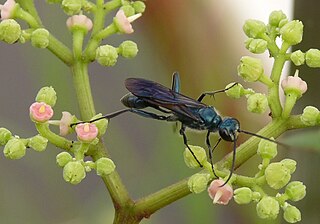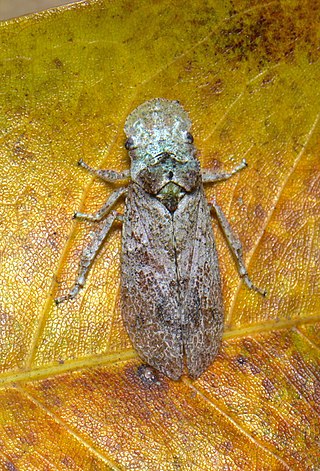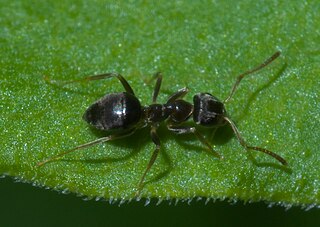
Sceliphron, also known as black mud daubers or black mud-dauber wasps, is a genus of Hymenoptera of the Sphecidae family of wasps. They are solitary mud daubers and build nests made of mud. Nests are frequently constructed in shaded niches, often just inside of windows or vent openings, and it may take a female only a day to construct a cell requiring dozens of trips carrying mud. Females will add new cells one by one to the nest after each cell is provisioned. They provision these nests with spiders, such as crab spiders, orb-weaver spiders and jumping spiders in particular, as food for the developing larvae. Each mud cell contains one egg and is provided with several prey items. Females of some species lay a modest average of 15 eggs over their whole lifespan. Various parasites attack these nests, including several species of cuckoo wasps, primarily by sneaking into the nest while the resident mud dauber is out foraging.

Spilomelinae is a very species-rich subfamily of the lepidopteran family Crambidae, the crambid snout moths. With 4,135 described species in 344 genera worldwide, it is the most speciose group among pyraloids.

Helicarionidae is a family of air-breathing land snails or semi-slugs, terrestrial pulmonate gastropod mollusks in the superfamily Helicarionoidea.

Crabronini is a tribe of square-headed wasps in the family Crabronidae. There are 48 genera and over 1,500 described species in Crabronini. Wasps of this tribe are mostly small to very small wasps. Typical of this tribe are the forewings with a single submarginal cell, the lack of membranous metanotal and propodeal modifications, and a square-shaped head.

Thyreus is an Old World genus of bees, one of many that are commonly known as cuckoo bees, and are cleptoparasites of other species of bees, mostly in the genus Amegilla. They all have strongly contrasting patterns of coloration - three species from the Sydney region, Thyreus nitidulus, T. lugubris, and T. caeruleopunctatus are bright blue and black.

The Phasianinae are a subfamily of the pheasant family (Phasianidae) of landfowl, the order Galliformes. The subfamily includes true pheasants, tragopans, grouse, turkey and similar birds. Although this subfamily was considered monophyletic and separated from the partridges, francolins, and Old World quails (Perdicinae) till the early 1990s, molecular phylogenies have shown that this placement is paraphyletic. For example, some partridges (genus Perdix) are more closely affiliated to pheasants, whereas Old World quails and partridges from the genus Alectoris are closer to junglefowls. There are two clades in the Phasianinae: the erectile clade and the non-erectile clades. Both clades are believed to have diverged during the early Oligocene, about 30 million years ago.

Chalybion is a genus of blue mud dauber wasps in the family Sphecidae. Chalybion species nest in a wide range of natural and artificial cavities such as holes in wood, walls, plant stems, etc., where they typically provision their brood cells with paralyzed spiders. They also reuse old nests of other wasps like Trypoxylon and Sceliphron.
Dalara is a genus of wasp in the family Crabronidae, tribe Larrini.

Callidiini is a tribe of beetles in the subfamily Cerambycinae, containing the following genera:

Ledrinae is a relatively small subfamily within the very large and diverse leafhopper family Cicadellidae. Originally placed in its own family, the "Ledridae", it is based on the type genus Ledra.

Trimerotropini is a tribe of band-winged grasshoppers in the family Acrididae. There are at least 70 described species in Trimerotropini: found in the western Americas.

Oxybelini is a tribe of square-headed wasps in the family Crabronidae. There are about 15 genera and more than 440 described species in Oxybelini.

Pepsini is a tribe of spider wasps in the family Pompilidae.

Lasiini is a tribe of ants in the family Formicidae. There are about 10 genera and more than 450 described species in Lasiini.
Miscophini is a tribe of square-headed wasps in the family Crabronidae. There are about 17 genera and at least 570 described species in Miscophini.

Chorotypinae is a subfamily of grasshoppers in the family Chorotypidae. There are currently more than 30 described species in Chorotypinae, found in Africa and Asia
Palarini is a tribe of square-headed wasps in the family Crabronidae. There are at least 2 genera and more than 30 described species in Palarini.
Xyronotidae is a family of central American grasshoppers in the order Orthoptera. There are at least two genera and four described species in Xyronotidae.

Lophophorini is a tribe of bird in the subfamily Phasianinae. It contains three genera of pheasant found throughout Asia. This grouping was supported by a 2021 phylogenetic analysis of Galliformes, and accepted by the International Ornithological Congress. The tribe name is accepted by the Howard and Moore Complete Checklist of the Birds of the World.
















